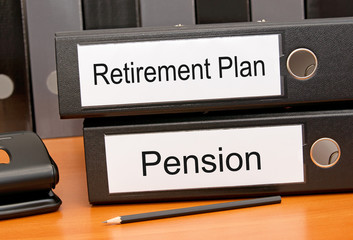Employer Sponsored Retirement Plans
What is a Qualified Retirement Plan?

A qualified retirement plan is a retirement plan sponsored by an employer that qualifies for special tax treatment as specified in Section 104(a) of the Internal Revenue Code.
There are numerous types of qualified retirement plans; however it is easiest to break them into two primary categories: Defined Contribution Plans, and Defined Benefit Plans.
Defined Contribution Plan
A Defined Contribution Plan is a retirement plan established by the employer but is funded from contributions made by employees. Contribution amounts are determined as either a percentage or specific dollar amount of each employee’s earnings. Employers may choose to contribute to their employee’s retirement, however this is not mandatory. With a defined contribution plan the employees are responsible for the investment choices and management of their contributions.
Types of Defined Contribution Plans:
Traditional 401(k)
With a 401(k) plan, eligible emplyees who choose to participate determine what portion of their earning they want to defer. This amount can be either a set dollar amount of percentage with deductions taking place each pay period. Deferrals are made on a pre-tax basis but, if allowed by the plan, deferrals can be made on an after-tax (Roth) basis. 401(k) plans, can vary significantly in their complexity. Vermillion Financial Advisors will help you work through these complexities and offer guidance when what makes most sense for your business.
Like most profit sharing plans, 401(k) plans can vary significantly in their complexity. However many financial institutions and other organizations offer prototype 401(k) plans, which can greatly lessen the administrative burden of establishing and maintaining these plans.
Safe Harbor 401(k) Plans
A safe harbor 401(k) plan is intended to encourage plan participation among rank-and-file employees and to ease the administrative burden by eliminating the test ordinarily applied under a traditional 401(k) plan. This plan is ideal for businesses with highly compensated employee’s whose contributions would be limited in a traditional 401(k) plan.
403(b)
The first step in offering a qualified retirement plan is making the commitment to offer a retirement plan. Deciding on the particular plan to offer can be challenging, however Vermillion Financial Advisors offers expertise in helping you with this process. Your VFA advisor will work closely with you to identify the specific needs or goals desired for your plan. This information will help determine which type of plan makes the most sense for your business.
Profit Sharing
If you do make contributions, you will need to have a set formula for determining how the contributions are allocated among plans participants. The funds are accounted separately for each employee.
Profit sharing plans can vary greatly in their complexity. Many financial institutions offer prototype profit sharing plans that can reduce the administrative burden on individual employers.
Defined Benefit Plan
A Defined Benefit Plan is a retirement plan or pension plan which is funded through contributions from the employer. The employer promises a specified monthly benefit to your employees based on a predetermined fixed formula. Factors involved in this formula include an employee’s earning history, year of service with your firm, and the employee’s age. With defined benefit plan, the employer is responsible for managing all contributions into the plan. As a result, employers will use outside investment managers to manage these assets.
Some employers find that defined benefit plans offer business advantages. For instance, business can generally contribute (and therefore deduct) more each year than in defined contribution plans. In addition, employees can often value the fixed benefit provided by this type of plan and can often receive a greater benefit at retirement than under any other type of retirement plan. However, defined benefit plans are often more complex, and likely more expensive to establish and maintain than other types of plans.
Types of Defined Benefit Plans:
Traditional Pension
Cash Balance
contact Vermillion Financial Advisors today.
PREVIOUS
« Retirement Plans Overview
NEXT
What is an Individual Retirement Account? »

